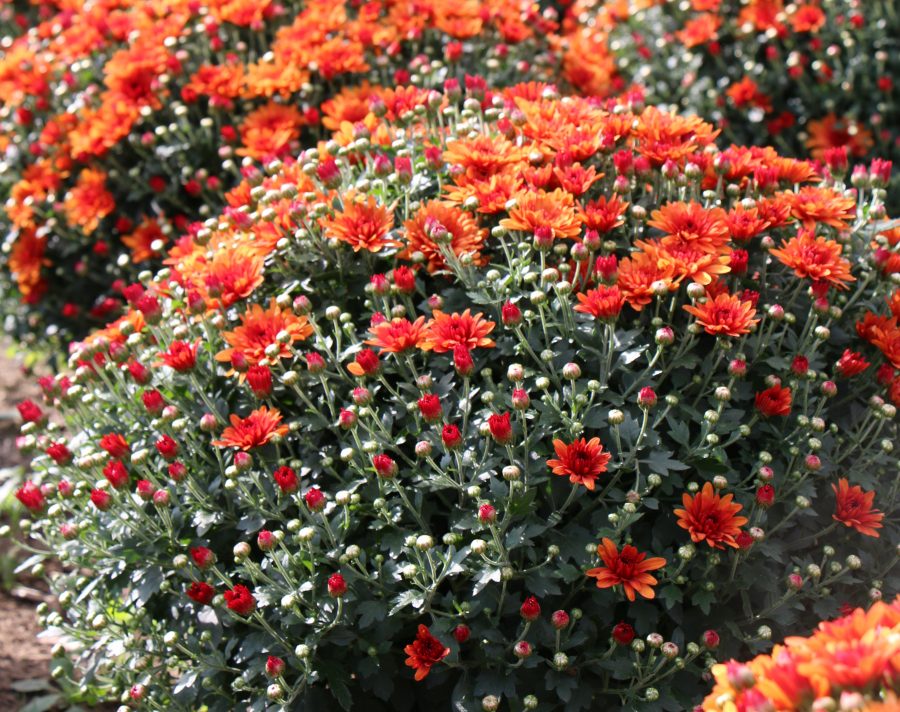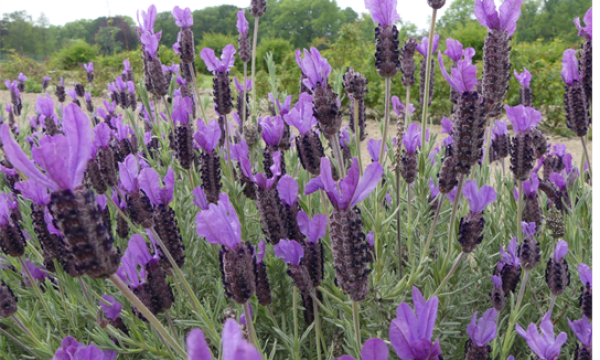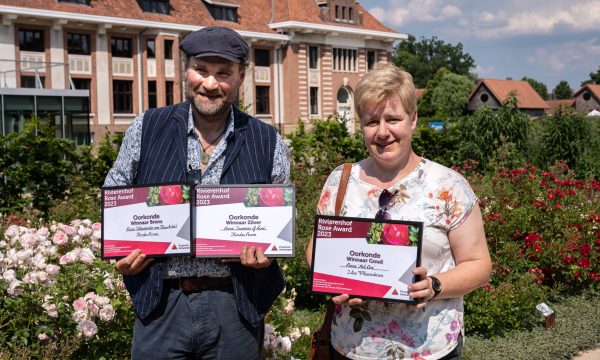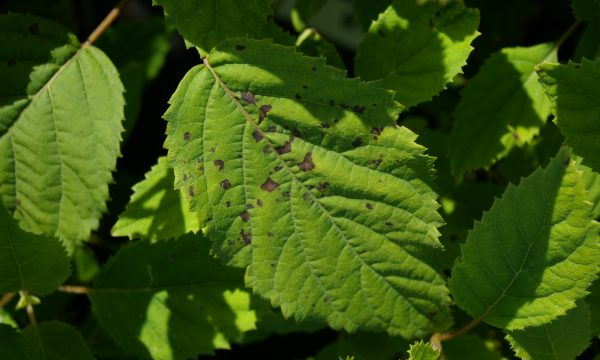Press release Climate-conscious celebrations of All Saints' Day: chrysanthemum grown on compost and leftover green material?

Pot chrysanthemums grown on peat-poor substrates and fertilized in the field with local green residual flows grow just as well or even better than pot chrysanthemums grown on peat-rich substrate and fertilized with farmyard manure. In the Flemish research project Bi-o-ptimal@work, soil scientists have worked out high-performing, environmentally-improving cultivation techniques. In ornamental plant cultivation, keeping the soil chemistry sustainably in balance is very challenging, because you have to make the right choices of materials and fertilizers both in the potting phase and in the longer (perennial) outdoor phases, good for the crop and good for the soil and environment.
Ambition on the field: phosphorus down and carbon up
How do you ensure carbon build-up and just enough nitrogen in perennial crops where it's hard to incorporate manure in between but without undesirable phosphorus build-up? Fien Amery (ILVO): "Applying nutrient-poor green management residues worked surprisingly well in our experiments. Per unit phosphorus they contain up to 10 times more carbon than farmyard manure."
Karen Vancampenhout (KU Leuven), coordinator of the VLAIO project Bi-o-ptimal@work, a project with PCS, ILVO and KU Leuven: "In Flanders, we indeed have many plots with already quite high phosphorus levels as a starting situation, and then it is important to avoid nitrate leaching, and still allow the plants to develop healthily and well. Our findings therefore offer perspectives for several ornamental crops. A win for the climate, water and soil!
The farmyard manure dilemma
Ornamental growers today mainly use farmyard manure - sometimes compost - as a starting fertilizer when planting perennial crops. Depending on the crop, organic fertilization can be applied only every 2-3 years (forest trees) or even every 4-5 years (street trees). However, manure legislation makes it increasingly difficult for ornamental growers to apply large amounts of farmyard manure at one time. In addition, most Flemish agricultural soils (75%) contain too much phosphorus, which entails risks of leaching but is slow to correct. Even with zero fertilization, it can take 11 to 20 years for the phosphorus content in the soil to return to the desired target zone.
Zero fertilization is often not an option for agricultural and horticultural crops, and is also not interesting from the point of view of carbon build-up. More organic carbon in the soil means less CO2 in the air and better water management - both important assets in times of climate change. To improve the climate and environmental impact of their crops, ornamental growers are therefore looking for soil improvers with a high ratio of carbon to phosphorus. This also makes economic sense, because with a stronger sustainability story, growers can differentiate themselves internationally and tap into new export markets and sales channels.
Ambition for pot plants: less peat in the substrate
For ornamental plant cultivation on substrate, there is a need for sustainable alternatives to peat. Peat is still the gold standard in potting soil because of its interesting technical properties. However, peat is slow to renew itself, the exploitation in the Baltic States puts local ecosystems under pressure and transport to Flanders is associated with carbon emissions. Every percentage less peat in substrates is therefore a win for the climate.
Ornamental growers are therefore looking for organic material that can replace at least part of the peat in the pots. This material must offer the same physical advantages as peat: it must be airy and water permeable.
Which alternative materials?
Based on various analyses that also identified (un)desirable properties such as salinity, pH and nitrogen immobilization capacity, the partners of Bi-o-ptimal@work selected these promising, local materials through a scoring system developed during the project:
- Heather chopper is the heather vegetation along with part of the upper humus layer. It is rich in organic matter and poor in nutrients. The vegetation is chopped during management.
- Pitrus is a ubiquitous herb that grows in wet areas and is released during mowing. It is rich in organic matter and poor in nutrients. The vegetation is chopped.
- Compost is rich in carbon but also rich in nutrients. However, the phosphorus in compost is less prone to leaching than the phosphorus in farmyard manure.
Field trials: green residual flows from management is a good source of low-phosphorus carbon
The field trials conducted with field maple and chrysanthemum confirm the potential of pitrus and heather chopper as low phosphorus but high carbon soil conditioners. The ornamental growers involved achieved the same yields for field maple and chrysanthemums.
Fien Amery (ILVO): "Green residues from management contribute almost no extra phosphorus. At the same time, compared to farmyard manure, they contain much more carbon per unit of phosphorus, up to 10 times as much! That is interesting for perennial crops and especially on Flemish soils that already contain high levels of phosphorus. Ornamental growers therefore have less risk of phosphate and also nitrate leaching with management residues, but in doing so enrich their soil with soil organic carbon, making it better able to capture water and release it to plants in times of drought."
Pot trials: less weed management and less fertilizer need when using compost and green management residues
In pot trials at PCS with field maple, chrysanthemum, Ellwoodii (a dwarf cypress) and azalea, 60% of the peat was successfully replaced with compost, heather chopper or pitrus. This resulted in equally high or even higher yields for all crops. Because compost contains more nutrients than peat, less fertilizer had to be applied. There was also less weed pressure, which in practice implies less labor and costs.
Ilse Delcour (PCS): "Despite the higher salt content and lower permeability of compost compared to peat, we were able to successfully replace more than half of the peat. That means big steps forward in the climate and environmental impact of substrate cultivation."
Ready tomorrow?
Not quite. There are certainly still challenges before compost and management residues can be widely used in ornamental plant cultivation. Today, for example, these materials are not sufficiently and everywhere available. Moreover, there are legislative obstacles: the direct application of biomass residues such as crop management residues in the field is still a legal gray area. The partners hope that the insights from Bi-o-ptimal@work can change this.




